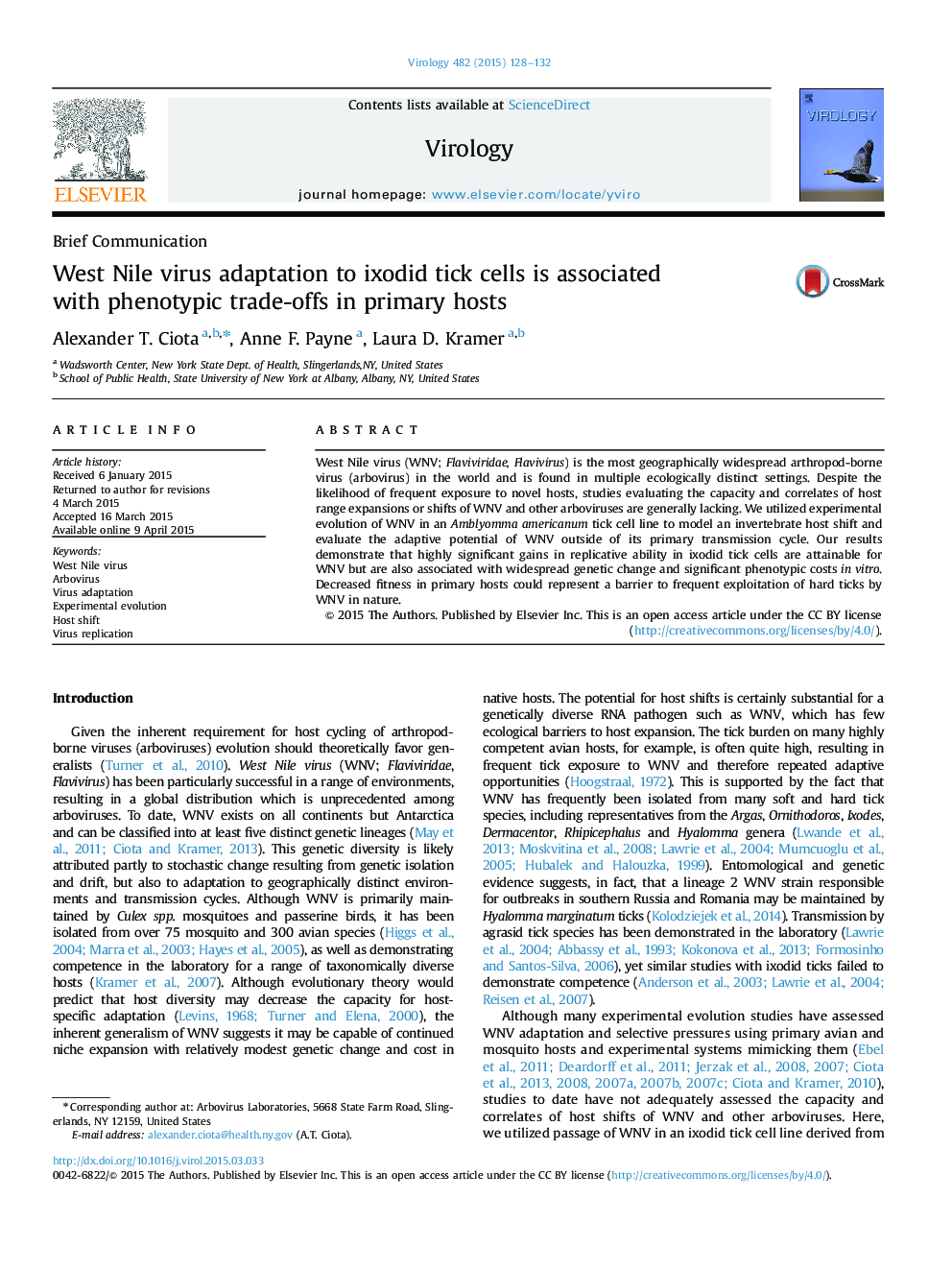| Article ID | Journal | Published Year | Pages | File Type |
|---|---|---|---|---|
| 6139481 | Virology | 2015 | 5 Pages |
Abstract
West Nile virus (WNV; Flaviviridae, Flavivirus) is the most geographically widespread arthropod-borne virus (arbovirus) in the world and is found in multiple ecologically distinct settings. Despite the likelihood of frequent exposure to novel hosts, studies evaluating the capacity and correlates of host range expansions or shifts of WNV and other arboviruses are generally lacking. We utilized experimental evolution of WNV in an Amblyomma americanum tick cell line to model an invertebrate host shift and evaluate the adaptive potential of WNV outside of its primary transmission cycle. Our results demonstrate that highly significant gains in replicative ability in ixodid tick cells are attainable for WNV but are also associated with widespread genetic change and significant phenotypic costs in vitro. Decreased fitness in primary hosts could represent a barrier to frequent exploitation of hard ticks by WNV in nature.
Related Topics
Life Sciences
Immunology and Microbiology
Virology
Authors
Alexander T. Ciota, Anne F. Payne, Laura D. Kramer,
